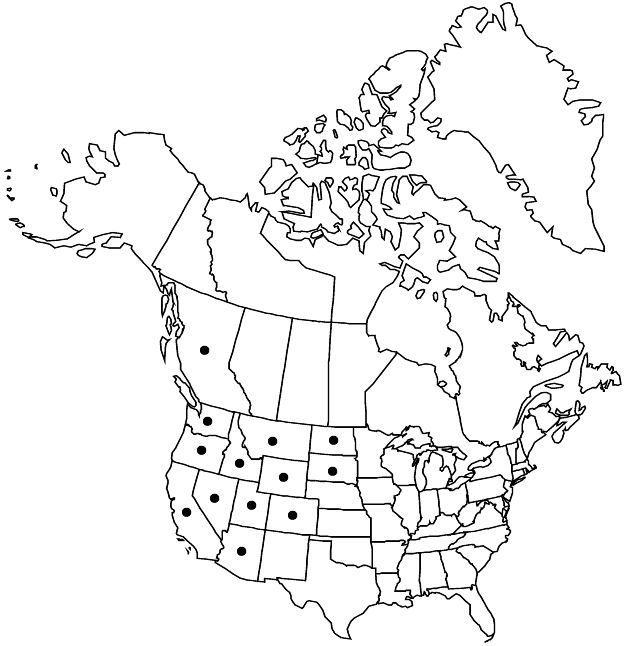Mentzelia dispersa
Proc. Amer. Acad. Arts 11: 137. 1876.
Plants wandlike or candelabra-form, 10–40(–50) cm. Basal leaves persisting; petiole present or absent; blade elliptic to linear, margins usually dentate, sinuses extending less than 1/4 to midvein, or entire, rarely deeply lobed. Cauline leaves: petiole present or absent (proximal leaves), absent (distal leaves); blade elliptic to linear (proximal leaves), orbiculate to linear (distal leaves), to 10 cm, margins usually dentate, sinuses extending less than 1/4 to midvein, or entire, rarely deeply lobed. Bracts green, orbiculate to ovate, 2.1–6.5 × 1.1–3 mm, width 1/3–7/8 length, not concealing capsule, margins 3-lobed or entire. Flowers: sepals 1–3.5 mm; petals usually yellow, rarely orange, proximally, yellow distally, 2–6(–8) mm, apex rounded; stamens 20–40, 2–4.5 mm, filaments monomorphic, filiform, unlobed; styles 2–3.5(–5) mm. Capsules narrow-cylindric, 7–30 × 1–2.5 mm, axillary curved to 30° at maturity, usually inconspicuously longitudinally ribbed. Seeds 10–20, in 1 row distal to mid fruit, tan, dark-mottled or not, triangular prisms, surface ± smooth under 10× magnification; recurved flap over hilum absent; seed coat cell outer periclinal wall flat. 2n = 18, 36, 72.
Phenology: Flowering (Apr–)May–Aug(–Sep).
Habitat: Loamy to sandy or rocky slopes, grasslands, scrub, dry forests, roadsides.
Elevation: 400–3100 m.
Distribution

B.C., Ariz., Calif., Colo., Idaho, Mont., Nev., N.Dak., Oreg., S.Dak., Utah, Wash., Wyo.
Discussion
Mentzelia dispersa is the only polyploid species solely derived from the “Affines” clade and may be an autopolyploid complex (J. M. Brokaw and L. Hufford 2010, 2010b). Morphological characters that consistently distinguish cytotypes within M. dispersa have not been found. Mentzelia dispersa is most easily confused with M. affinis (see discussion under 65. M. affinis) but is phylogenetically distinct (Brokaw and Hufford 2010, 2010b).
Selected References
None.